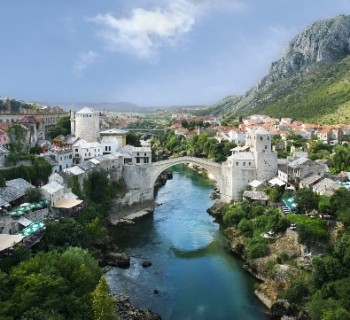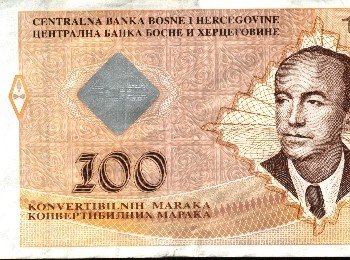Coat of arms of Bosnia and Herzegovina
The map of Europe in the twentieth century was repeatedly redrawn as a result of hostilities and peace agreements. The end of the century was marked by the collapse of the Soviet Union and, accordingly, the socialist bloc. New states, oriented to the West, appeared, this was reflected in their state symbols. One of them is the coat of arms of Bosnia and Herzegovina with white stars symbolizing Europe.
Strictly and clearly
At the moment, the coat of arms of Bosnia and Herzegovina can be considered one of the most restrained and laconic, in contrast to the name of the state, which is one of the longest and most deployed on the planet. Three colors were chosen for the main official symbol of the country:
- azure color, symbolizing the sky, sea, freedom and independence;
- yellow (golden) - a symbol of the sun, wealth and prosperity;
- white or, according to heraldic traditions, silver.
Basic symbols
The coat of arms itself is a shield, most of it is azure, the upper right corner is occupied by a yellow triangle. Silver stars lined up along the azure field in a line along the triangle.
The three sides of the triangle are a symbolic reminder of the main population groups living in Bosnia and Herzegovina - Bosniaks, Serbs and Croats. And the geometric shape of the figure itself resembles the outlines of this small state, located in the southeastern part of Europe..
Complicated story
The territories now occupied by Bosnia and Herzegovina have long been a tasty morsel for the powers that be, various rulers and neighboring economically and politically powerful powers..
In the history of this country there have been ups and downs, periods of relative independence and submission to strong empires. The first state that appeared in the present territories of Bosnia and Herzegovina, scientists date back to the XII century. It was the Bosnian Banat, which became a kingdom in the 14th century.
Later, Bosnia, and then Herzegovina, which was part of the kingdom, fell under the rule of the Ottoman Empire, which was replaced by the Austro-Hungarian Empire in the 19th century. Attempts to create a state were made repeatedly in the twentieth century. But most often it had to be an integral part of other countries: Yugoslavia (1929-1941), Croatia (1941-1945), again Yugoslavia (until 1992). The spring of 1992 will be remembered by local residents for the formation of their own state called the Republic of Bosnia and Herzegovina.


